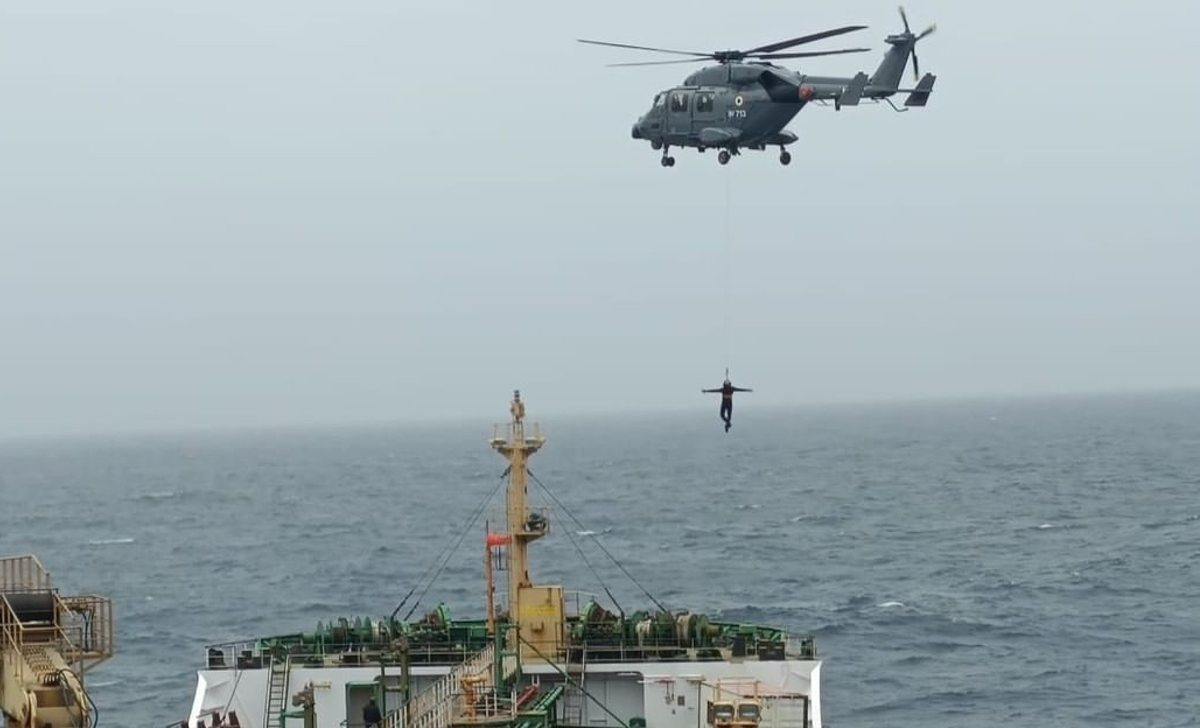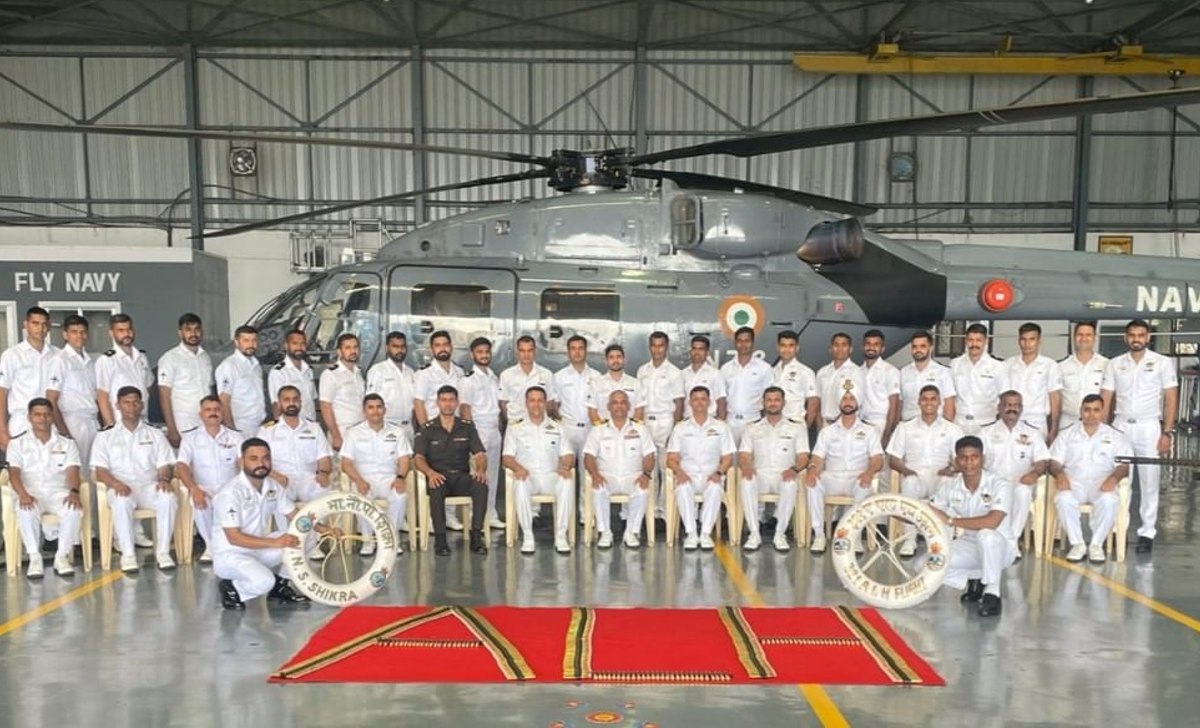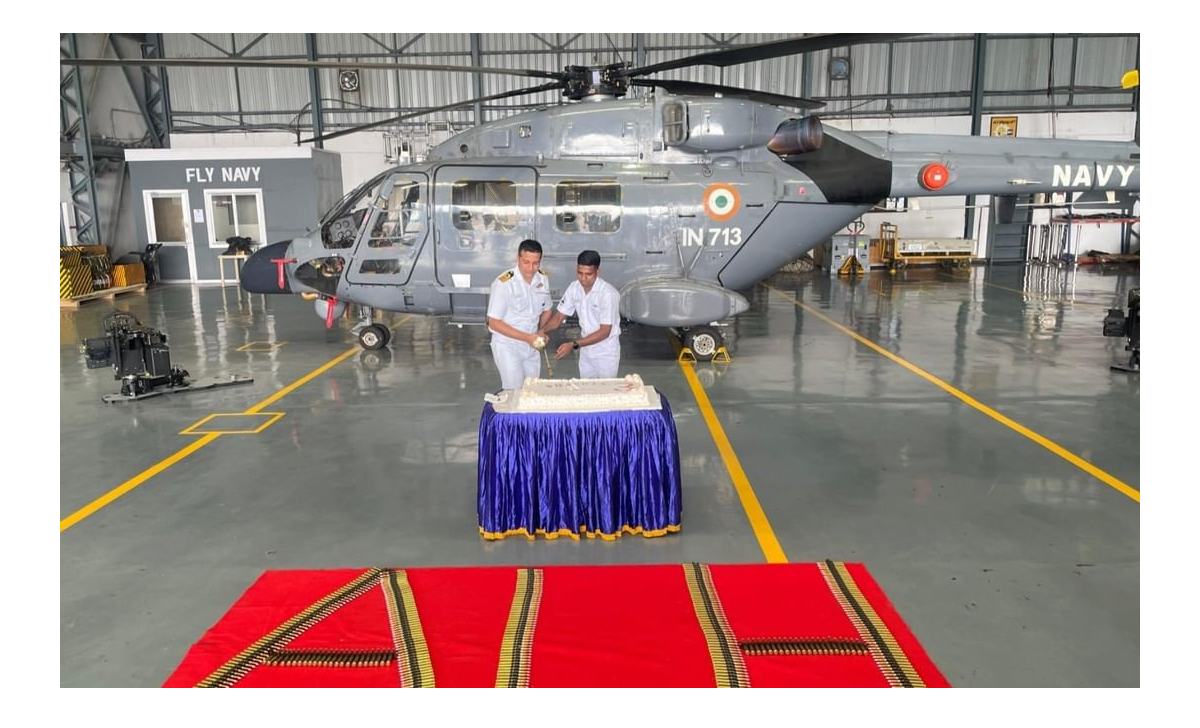TopGear India loves geeking about engines. Every car, every motorcycle that each loves in this office has a beautiful engine that propels these love machines into their hearts. Now you would think that this madness only limits to the things that go fast on the road. Not quite! Today, we love to showcase a machine that uses two engines to go fast and does a much more important job than just transporting people. Today, TopGear India aims to shed some light on India’s pride in the world of helicopters… The Dhruv MK III!
In case you don’t know, the Dhruv Mk III is an ALH (Advanced Light Helicopter) whose main job is to guard the Indian skies against whatever stands as a threat. Now that is what you call a job. This helicopter is a twin-engine, multi-role, multi-mission new generation helicopter in the 5.5-ton weight class. You might be wondering if 5.5 tonnes is massive! But as the name suggests this is a Light helicopter although the light weight doesn’t even tell you half the story about the amount of powerful capabilities it carries up its sleeve. The versatility of this helicopter has allowed it to creep into every vertical of the Indian Defence Force and is also exported to our allies.
Limited (HAL) for 34 ALH Dhruv Mk III helicopters, marking a significant step toward defense indigenization. Under the agreement, 25 helicopters will be delivered to the Indian Army for search and rescue, troop transport, and high-altitude operations, while nine will go to the Indian Coast Guard for maritime surveillance and interdiction. The project is expected to generate 190 lakh man-hours of employment, engaging over 200 MSMEs and 70 local vendors, reinforcing the vision of ‘Aatmanirbhar Bharat’ in defense manufacturing.
What’s Inside?
One of the Dhruv Mk 3’s greatest strengths lies in its high-altitude performance and impressive range, powered by two Shakti-1H1 turboshaft engines developed by HAL in collaboration with Safran Helicopter Engines. These engines are specifically tailored for operations in challenging, high-altitude environments, making the Dhruv especially useful in areas like the Himalayas. With a maximum speed of around 250 km/h (135 knots) and an operational range of approximately 630 km (391 miles), the Dhruv Mk 3 is highly capable of covering vast distances on a single tank of fuel. Additionally, its service ceiling of 6,000 meters (19,685 feet) means it can operate in the upper ranges of mountainous terrains, where many helicopters struggle. This combination of speed, range, and altitude capability makes the Dhruv Mk 3 exceptionally versatile for military operations in diverse settings.
Capabilities
The helicopter’s payload and capacity also add to its operational appeal. The Dhruv Mk 3 can carry up to 1,500 kg (3,307 lbs) of external payload or transport 12 fully-equipped soldiers, making it a valuable asset for troop movement and supply missions. This payload capacity is significant for a medium-lift helicopter and highlights its strength in transporting personnel and essential supplies. The Dhruv Mk 3 can also be equipped with weapon systems, making it adaptable for light combat missions when necessary. This range of mission options enhances the Dhruv’s utility, enabling the Indian Armed Forces to use it flexibly in combat support, disaster response, and logistics.
In addition to its payload and performance, the Dhruv Mk 3 is equipped with advanced avionics, making it easier and safer to operate in complex missions. The helicopter features a digital glass cockpit with multi-function displays (MFDs) that provide real-time information and enhance pilot situational awareness. Other avionics include an electro-optical pod, radar warning receiver, and a countermeasure dispensing system, which boosts its survivability in combat environments. A four-axis auto-pilot system further reduces the pilot workload and increases mission reliability, especially during long or complex sorties. The Mk 3 variant also includes maritime capabilities such as an automatic flight control system and foldable rotors, which make it suitable for naval use and ship-borne operations. These advancements not only improve operational safety but also give the Dhruv Mk 3 an edge in multi-role adaptability.
Competition Against Rivals
When compared with other helicopters in its class, the Dhruv Mk 3 holds its own well. For instance, the Sikorsky UH-60 Black Hawk, a widely used military helicopter, has a slightly higher payload capacity of 2,500 kg and a comparable range. However, the Black Hawk is heavier, more costly, and requires greater operational expenses. While the Black Hawk is optimized for heavy-duty military engagements, the Dhruv offers a more balanced mix of multi-role capabilities, especially in high-altitude and SAR missions. Similarly, the Eurocopter AS565 Panther, popular for naval operations, has a higher top speed and range than the Dhruv, but the Dhruv performs better in high-altitude environments and is more cost-effective, an advantage for the Indian Navy’s diverse requirements. Compared with the AgustaWestland AW109, the Dhruv outmatches it in payload capacity and altitude performance, making it a better choice for military operations in mountainous terrain.
Overview and Statistics
The Dhruv Mk 3’s high-altitude capability, multi-role adaptability, and indigenous production make it especially valuable for the Indian Armed Forces. Designed to function efficiently in rugged and varied terrains, it has proven itself indispensable for troop transport, SAR, reconnaissance, and disaster response. Beyond performance and adaptability, the Dhruv Mk 3 offers cost-efficiency compared to many Western alternatives, providing similar functionality at a fraction of the operational cost. Additionally, as an indigenous platform, it benefits from tailored support and customization, with maintenance and upgrades available domestically. This local advantage not only reduces costs but also strengthens India's self-reliance in defense technology.
Overall, the ALH Dhruv Mk 3 stands out as an exceptional utility helicopter and also stands a backbone for the entire military army. With its unique ability to navigate challenging terrains and perform a range of missions, the Dhruv Mk 3 remains a critical component of India’s air capabilities and a testament to HAL’s engineering.
Performance (Stats may Differ*)
-
Engines: 2 x Shakti-1H1 turboshaft engines
-
Maximum Speed: 250 km/h (135 knots)
-
Range: 630 km (391 miles)
-
Service Ceiling: 6,000 meters (19,685 feet)
-
Rate of Climb: 10.3 m/s
Payload and Capacity
-
External Payload: Up to 1,500 kg (3,307 lbs)
-
Passenger Capacity: 12 fully-equipped soldiers or equivalent load
-
Crew: 2 (pilot and co-pilot)
Avionics and Systems
-
Cockpit: Digital glass cockpit with multi-function displays (MFDs)
-
Auto-Pilot: Four-axis auto-pilot system
-
Survivability: Radar warning receiver, electro-optical pod, countermeasure dispensing system
-
Maritime Variant Features: Foldable rotors, automatic flight control system
Dimensions
-
Length: 15.9 meters (52.2 feet)
-
Rotor Diameter: 13.2 meters (43.3 feet)
-
Height: 4.98 meters (16.3 feet)
Roles and Capabilities
-
Primary Roles: Troop transport, SAR, reconnaissance, medical evacuation, light combat
Maritime Operations: Anti-submarine warfare (ASW), ship-based logistics, SAR







